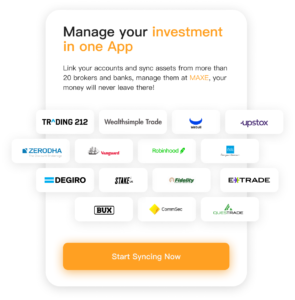MAXE Financial Markets Consulting: US Economic Calendar
TUESDAY, OCT. 29
9:00 am S&P Case-Shiller home price index (20 cities)
10:00 am Consumer confidence
10:00 am Job openings
WEDNESDAY, OCT. 30
8:15 am ADP employment Oct.
8:30 am GDP
8:30 am Advanced U.S. trade balance in goods
8:30 am Advanced retail inventories
8:30 am Advanced wholesale inventories
10:00 am Pending home sales
Is It Worth Paying Attention to Crude Oil Futures in December 2024:

As the global economy continues to navigate the complexities of recovery post-pandemic, the crude oil market remains a focal point for investors and analysts alike. With December 2024 approaching, it’s essential to consider the factors that could influence crude oil futures during this period. This analysis will delve into the key elements impacting oil prices, including geopolitical dynamics, supply-demand fundamentals, and macroeconomic indicators.
Geopolitical Dynamics
Geopolitical events have historically exerted significant influence over oil prices. As we look toward December 2024, a range of geopolitical factors could shape the market landscape. Ongoing tensions in oil-rich regions, such as the Middle East, could lead to supply disruptions. For instance, Iran’s nuclear negotiations and their implications on oil exports are critical. Should sanctions be lifted, Iranian oil could flood the market, leading to price volatility.
Furthermore, the relationship between major oil-producing nations—particularly within OPEC—will also be pivotal. As OPEC+ continues to manage production levels to stabilize prices, any shifts in compliance among member states could affect supply. For example, if certain countries exceed their production quotas, it could lead to an oversupply situation, thereby exerting downward pressure on prices.
Supply-Demand Fundamentals
The fundamental relationship between supply and demand is crucial for understanding crude oil futures. As of late 2024, global oil demand has shown signs of recovery, particularly in emerging markets. China, as the world’s largest importer of crude oil, will play a vital role in determining demand levels. If China’s economy continues to rebound, the increased oil consumption could support higher prices.
Conversely, the transition towards renewable energy sources poses a long-term challenge for oil demand. Governments worldwide are setting ambitious targets for reducing carbon emissions, which may impact fossil fuel consumption. By December 2024, the pace of this transition and its impact on oil demand will be essential to monitor. The balance between traditional energy sources and renewables will likely dictate price movements.
Economic Indicators
Macroeconomic indicators are integral to assessing the overall health of the economy and, by extension, the oil market. Key indicators to watch include GDP growth rates, inflation, and employment figures. A robust global economy typically correlates with higher oil demand, while economic slowdowns can lead to diminished consumption.
Inflation, particularly in major economies like the United States, could also affect oil prices. Rising inflation often leads to increased interest rates, which can dampen economic growth and reduce energy demand. Conversely, if inflation persists without significant economic contraction, it may lead to speculative trading in oil futures, driving prices higher.
Technological Advancements
Technological innovation in the energy sector is another factor worth considering. The rise of shale oil production in the United States has transformed the global oil landscape over the past decade. Advances in extraction techniques have allowed for increased efficiency and lower production costs. By December 2024, the extent to which U.S. shale producers can respond to price fluctuations will be critical. If prices rise significantly, it could incentivize increased production, potentially leading to a supply glut.
Moreover, developments in electric vehicle (EV) technology and battery storage could also influence crude oil futures. A rapid adoption of EVs may diminish oil demand in the transportation sector, particularly if governments implement policies to promote cleaner energy options.
Market Sentiment and Speculation
Market sentiment plays a crucial role in the oil futures market. Traders’ perceptions of future supply and demand dynamics often dictate price movements. Speculation can lead to volatility, particularly in the lead-up to significant economic reports or geopolitical events. As we approach December 2024, market participants will likely react to news regarding OPEC meetings, inventory reports, and economic forecasts.
Investor sentiment will also be influenced by broader market trends, including equity market performance and commodity price correlations. A bearish outlook in global markets could lead to a sell-off in oil futures, while bullish sentiment could drive prices higher.
Conclusion
As we look ahead to December 2024, paying attention to crude oil futures remains a prudent strategy for investors and analysts. The interplay of geopolitical tensions, supply-demand fundamentals, macroeconomic indicators, and technological advancements will shape the oil market landscape. While uncertainties abound, a thorough analysis of these factors will provide valuable insights for navigating the complexities of crude oil futures.
In summary, the oil market is likely to experience fluctuations driven by both predictable and unforeseen events. Thus, staying informed and adaptable is essential for anyone looking to engage with crude oil futures in the coming months.

For more investment information, download our app: MAXE: The Revolutionary AI Financial Invest Management App. Get real-time updates on US stocks, securities, futures, exchange rates, and other asset information to help you make faster investment decisions.
MAXE serves users around the globe. As of now, the cumulative number of users who have downloaded the MAXE app has exceeded 300,000. This milestone indicates that an ever-growing number of individuals recognize the value of MAXE and are utilizing the APP to optimize their investment and financial management strategies.
Now, MAXE is available on Google Play and App Store . Say goodbye to traditional financial management methods and embrace the future of finance with MAXE.











